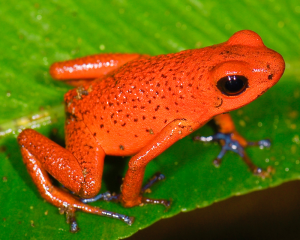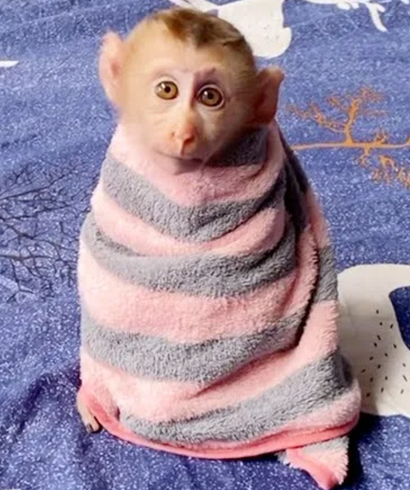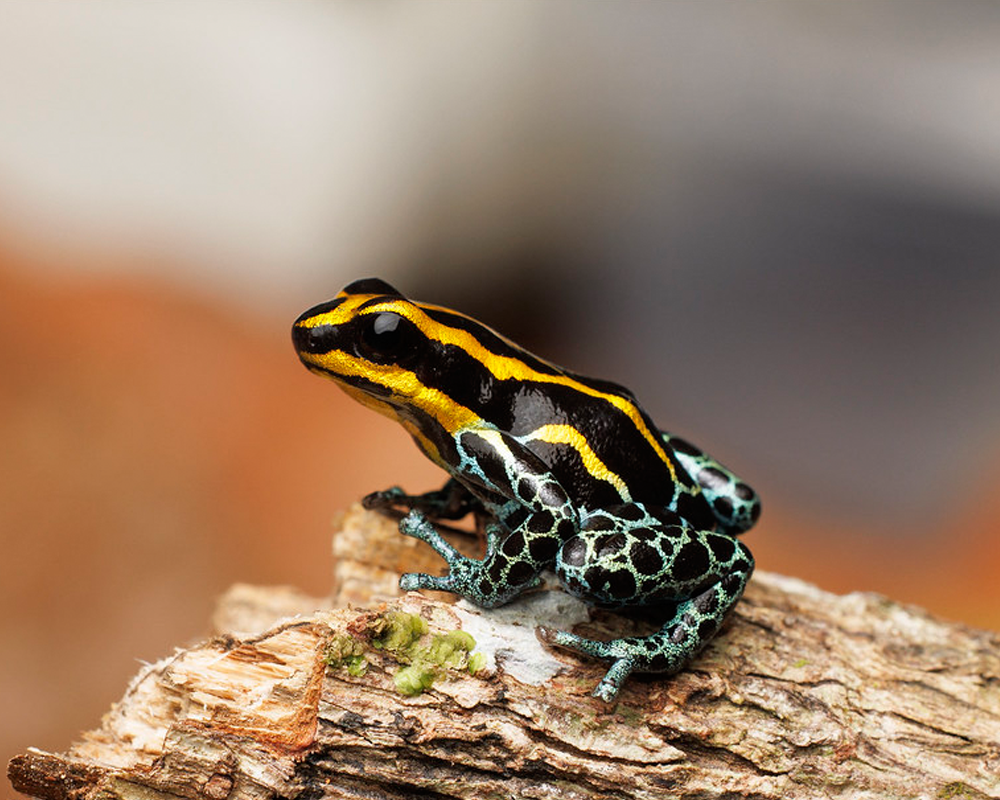
Zimmermann’s Poison Frog (Ranitomeya variabilis)
Found in the Amazon rainforest in Peru, this frog displays a wide range of colors, from yellow and black to green and blue. It is known for its ability to climb and its small size. The toxins produced by this frog can cause irritation and numbness.
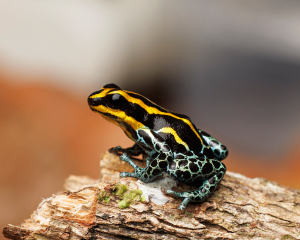
Phantasmal Poison Frog (Epipedobates tricolor)
This frog is native to Ecuador and is often a deep red color with white or yellow stripes. The Phantasmal Poison Frog produces a unique toxin called epibatidine, which is being studied for its potential as a painkiller, though it is highly toxic in its natural form.
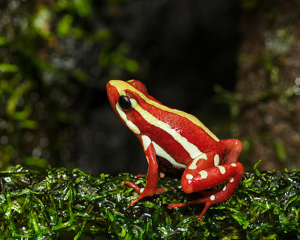
Blue-bellied Poison Frog (Ranitomeya reticulata)
Found in the lowland rainforests of Peru, this small frog is known for its intricate pattern of black, white, and yellow on its back and bright blue coloration on its belly. Although small, it produces potent alkaloid toxins.
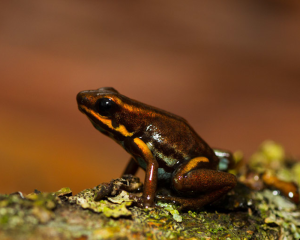
Black-legged Poison Frog (Phyllobates bicolor)
Native to Colombia, the Black-legged Poison Frog is characterized by its bright yellow or orange body with dark legs. It is one of the most toxic frogs in the Phyllobates genus, producing batrachotoxin, which can be deadly in very small amounts.

Golden Poison Frog (Phyllobates terribilis)
The Golden Poison Frog is considered one of the most toxic animals on Earth. Found in the rainforests of Colombia, it has a bright yellow or orange coloration that serves as a warning to predators. Its skin contains batrachotoxin, a potent toxin that can be lethal in small doses.
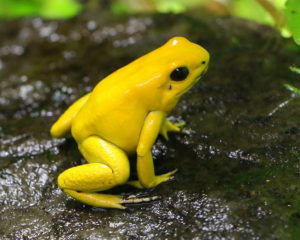
Dyeing Poison Frog (Dendrobates tinctorius)
The Dyeing Poison Frog, also known as the Dyeing Dart Frog, is one of the largest and most colorful members of the poison dart frog family. It exhibits a wide range of color variations, often with bright and contrasting patterns of yellow, green, or white against a dark blue or black background. The name “Dyeing” refers to an old practice by indigenous people who used the frog’s toxins to alter the color of parrot feathers by rubbing the frog on the bird’s skin.
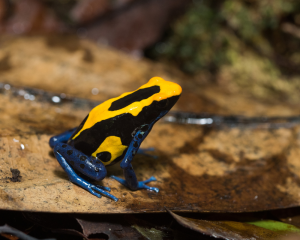
Green and Black Poison Dart Frog (Dendrobates auratus)
The Green and Black Poison Dart Frog is easily recognizable due to its striking coloration, which typically consists of bright green and black patterns. The green can range from lime green to turquoise or even blue in some individuals. The black pattern can vary greatly between individuals, often forming spots, blotches, or a marbled appearance on the frog’s skin. This vibrant coloration serves as a warning to potential predators about the frog’s toxicity.

Blue Poison Dart Frog (Dendrobates tinctorius “azureus”)
The Blue Poison Dart Frog is known for its striking bright blue color, which can range from light sky blue to a deeper, more vibrant hue. The frog’s skin is covered with small black spots, which are unique to each individual, much like a fingerprint. The vivid coloration serves as a warning to potential predators about the frog’s toxicity. This frog typically grows to about 3-4.5 centimeters (1.2-1.8 inches) in length.
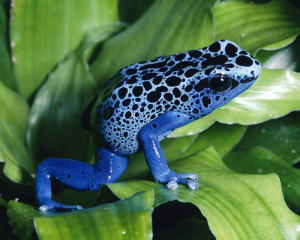
The Strawberry Poison-dart Frog (Oophaga pumilio)
Strawberry Poison Frog or Blue Jeans Frog, is a small but highly colorful amphibian known for its vibrant appearance and potent toxins. Here’s a detailed overview of this fascinating species:
The Strawberry Poison-dart Frog is a small frog, typically measuring around 1.7 to 2.4 centimeters (0.7 to 0.9 inches) in length. This species is renowned for its bright red body, resembling the color of a strawberry, which gives it its common name. The legs of the frog are often a striking blue or black, giving rise to the nickname “Blue Jeans Frog.” This vivid coloration is a form of aposematism, which serves as a warning to potential predators about the frog’s toxicity. Interestingly, the Strawberry Poison-dart Frog exhibits a wide range of color morphs depending on its geographical location, with variations including orange, yellow, green, and even blue-bodied frogs.
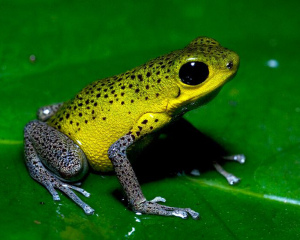
Poison Dart Frog (Family Dendrobatidae)
Poison dart frogs are small, typically ranging from 1.5 to 6 centimeters (0.6 to 2.4 inches) in length, depending on the species. They are well-known for their bright and varied colors, which can include hues of blue, green, red, yellow, orange, and black. These vivid colors serve as a warning to potential predators about the frogs’ toxicity, a phenomenon known as aposematism. The family Dendrobatidae includes over 170 species, which are grouped into several genera, including Dendrobates, Oophaga, Phyllobates, Ranitomeya, and Epipedobates.
